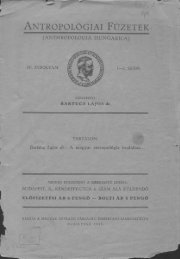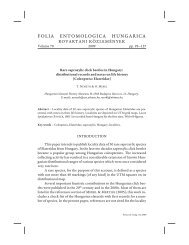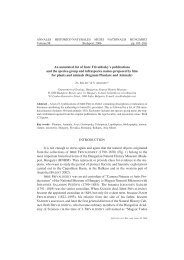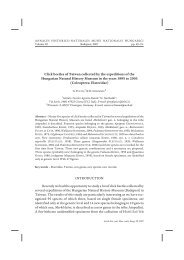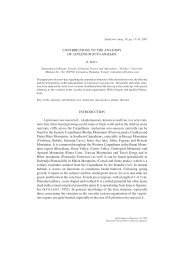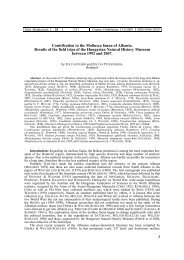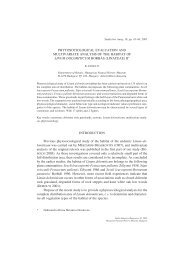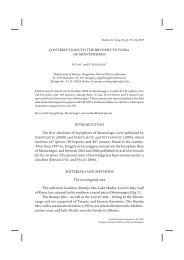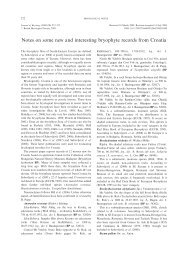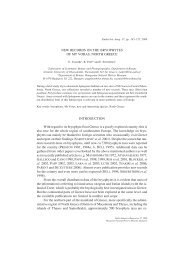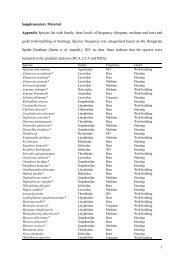THE GENUS SCHISTIDIUM (GRIMMIACEAE, MUSCI) IN HUNGARY ...
THE GENUS SCHISTIDIUM (GRIMMIACEAE, MUSCI) IN HUNGARY ...
THE GENUS SCHISTIDIUM (GRIMMIACEAE, MUSCI) IN HUNGARY ...
You also want an ePaper? Increase the reach of your titles
YUMPU automatically turns print PDFs into web optimized ePapers that Google loves.
<strong>THE</strong> <strong>GENUS</strong> <strong>SCHISTIDIUM</strong> <strong>IN</strong> <strong>HUNGARY</strong> 79<br />
Exothecial cells in central and lower part of urn predominantly isodiametric<br />
and transversely elongate<br />
Exothecial cells predominantly oblong<br />
Peristome teeth strongly curved, often semi-perforated in lower part<br />
and with small perforations in longitudinal rows in upper part, leaves<br />
mostly falcate to falcato-secund, mostly large plants<br />
(longipilose plants; calcareous or siliceous substrata)<br />
Peristome teeth straight or slightly curved, entire or irregularly perforated<br />
in upper part; leaves usually straight; small to medium-sized<br />
plants<br />
Perichaetial leaves broad, 0.8–1.1(1.25) mm wide (urn not or slightly<br />
exposed in lateral view); hair point structure intermediate between<br />
fine and coarse: rather coarse and stiff, but remnants of cell walls mostly<br />
clearly visible, broad (as broad as chlorophyllose part of the apex), up<br />
to 0.7 mm long, intensely white, urn smooth, plants glossy<br />
S. pulchrum (on siliceous or calcareous rocks in humid sites)<br />
Perichaetial leaves narrow, 0.5–0.6 mm wide (urn much exposed in<br />
lateral view); hair point fine but straight when dry, consisting of few<br />
cells, distinctly narrower than the chloropyllose part of the apex, up to<br />
0.15 (0.25) mm long; urn finely striolate after dehiscence, plants dull,<br />
small, growing in compact cushions<br />
(exposed calcareous, less often siliceous rocks)<br />
Basal marginal cells with thick transverse walls, more or less hyaline;<br />
urn hemispherical to ovate, peristome teeth short (< 340 μm) and<br />
cribrose (i.e. with numerous pits and holes); hair-point mostly fine and<br />
long (except S. brunnescens), flattened at base and composed of cells<br />
with clearly visible lumen<br />
Basal marginal cells usually without thick transverse walls (examine<br />
several leaves), sometimes elongate; urn ovate to oblong, peristome<br />
teeth 220–430 μm; hair-point always coarse, variable in length, terete<br />
or indistinctly flattened at base<br />
Studia bot. hung. 39, 2008



